Introduction
Are you considering bringing home a vibrant Catalina Macaw? These magnificent birds, with their stunning colors and captivating personalities, have become increasingly popular among bird enthusiasts across the United States. However, the journey of Catalina Macaw ownership comes with its unique challenges that many first-time owners aren’t prepared to face.
The Catalina Macaw is not a naturally occurring species but rather a first-generation hybrid, the result of breeding a Scarlet Macaw with a Blue and Gold Macaw. This special combination creates a bird with exceptional beauty, intelligence, and character that has captivated the hearts of many exotic pet lovers. Yet, the specific needs of a Catalina Macaw can sometimes catch new owners off guard.
In this comprehensive guide, we’ll explore the five biggest mistakes new Catalina Macaw owners make and provide expert advice on how to avoid them. Whether you’re researching before purchasing a Catalina Macaw or you’ve already welcomed one into your home, this information will help you provide the best possible care for your feathered friend.
Understanding the Catalina Macaw
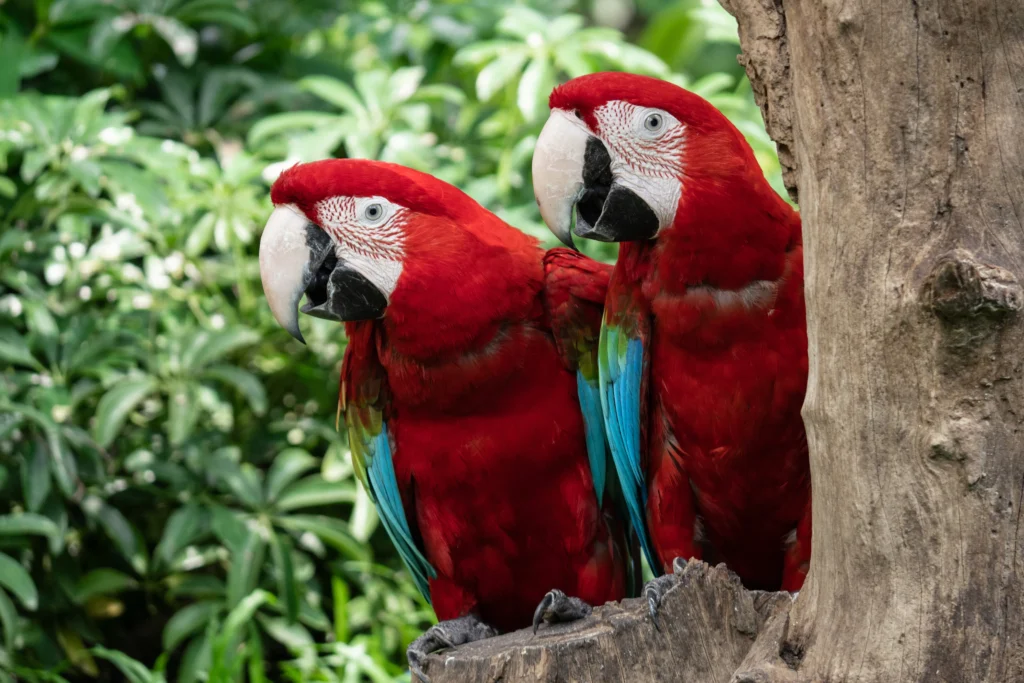
Before diving into common mistakes, let’s establish a solid understanding of what makes the Catalina Macaw unique among parrot species.
The Origins and Appearance of the Catalina Macaw
The Catalina Macaw inherits its striking appearance from its parent species. The vibrant red from the Scarlet Macaw combines with the blue and gold of its other parent to create a truly spectacular bird. The Catalina Macaw’s colors typically feature a blend of bright oranges, yellows, greens, and blues, with each bird displaying a slightly different pattern. This unique color combination makes the Catalina Macaw immediately recognizable and highly sought after among collectors and bird enthusiasts.
Catalina Macaw Size and Physical Characteristics
When it comes to Catalina Macaw size, these birds are quite substantial, measuring approximately 32-36 inches from beak to tail when fully grown. Their wingspan can reach up to 40-45 inches, making them one of the larger parrot species kept as pets. A healthy adult Catalina Macaw typically weighs between 900-1200 grams. Their powerful beaks, designed for cracking nuts and seeds in the wild, are one of their most notable features and require respect from their handlers.
Catalina Macaw Lifespan
One of the most significant commitments when adopting a Catalina Macaw is understanding their longevity. The Catalina Macaw lifespan typically ranges from 50 to 70 years with proper care. This impressive lifespan means that bringing a Catalina Macaw into your family is truly a lifetime commitment, potentially spanning generations. Some owners have even included provisions for their Catalina Macaw in their wills to ensure continued care.
Catalina Macaw Temperament and Personality
The Catalina Macaw temperament is often described as playful, affectionate, and highly social. These intelligent birds form strong bonds with their human families and can become deeply attached to their primary caretakers. While they inherit traits from both parent species, many Catalina Macaw owners report that these hybrids often exhibit a well-balanced temperament, combining the gentleness of the Blue and Gold Macaw with the spirited nature of the Scarlet Macaw.
Catalina Macaw Talking Ability
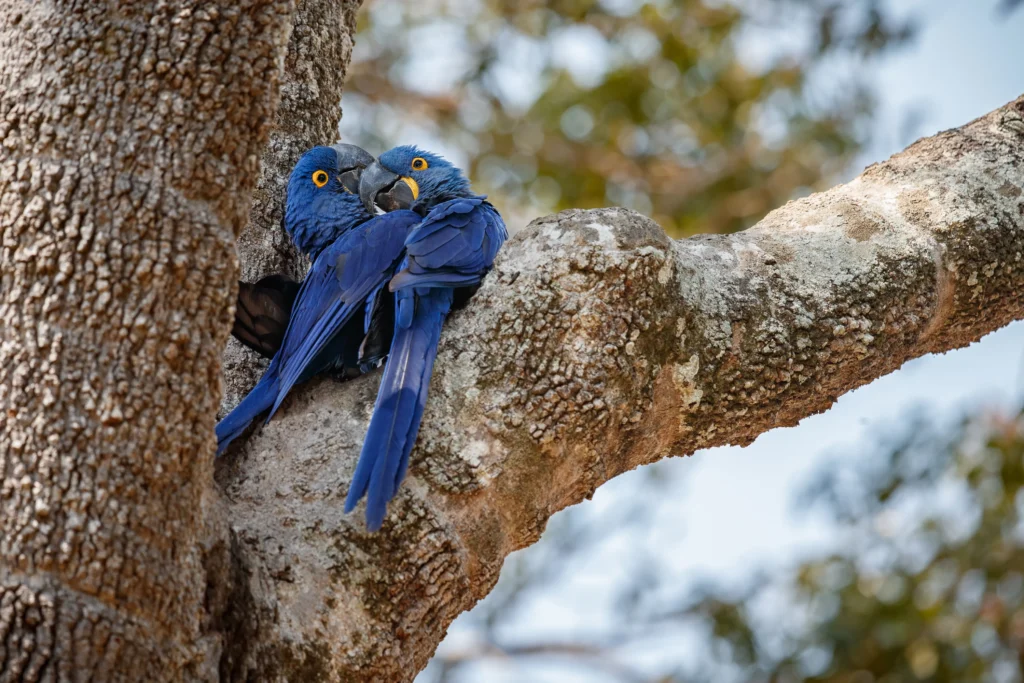
The Catalina Macaw talking ability is impressive, with many birds developing vocabularies of dozens to hundreds of words and phrases. Beyond mere mimicry, these intelligent birds often demonstrate an understanding of context when using their vocabulary. The Catalina Macaw talking ability varies from bird to bird, with some becoming exceptional talkers while others prefer to communicate through other vocalizations.
Mistake #1: Underestimating the Commitment Required for a Catalina Macaw
One of the most significant mistakes new owners make is failing to understand the enormous commitment that comes with Catalina Macaw ownership.
The Time Commitment
Catalina Macaws are not low-maintenance pets. They require several hours of direct interaction every day. These highly social birds need consistent attention, engagement, and mental stimulation. Without adequate social time, a Catalina Macaw may develop behavioral problems such as feather plucking, excessive screaming, or even self-mutilation.
Many potential owners see beautiful pictures of a Catalina Macaw for sale online and make impulse purchases without considering whether their lifestyle can accommodate such a demanding pet. Before bringing home a Catalina Macaw, honestly evaluate your daily schedule and determine if you can realistically provide the time these birds require.
The Financial Commitment
The initial Catalina Macaw price is just the beginning of your financial investment. While the purchase price for a Catalina Macaw typically ranges from $2,500 to $4,500 in the United States, the lifetime cost of ownership is much higher.
Expenses include:
- A spacious, high-quality cage ($500-$2,000)
- Regular veterinary care from an avian specialist ($200-$500 annually for check-ups)
- Emergencies or illness treatment ($500-$3,000 per incident)
- High-quality diet including fresh foods and specialized pellets ($75-$100 monthly)
- Toys and enrichment items ($50-$100 monthly, as Catalina Macaws are destructive chewers)
- Potential home modifications to create a bird-safe environment
The total cost of Catalina Macaw ownership can easily exceed $1,000 annually, not including unexpected medical expenses.
The Emotional Commitment
Catalina Macaws form deep, lasting bonds with their caregivers. These intelligent, emotional creatures essentially become a part of your family. The relationship requires emotional investment, patience, and understanding—particularly during challenging phases such as adolescence when hormonal changes can alter your Catalina Macaw’s temperament.
Expert Tip: Before committing to a Catalina Macaw, spend time with other macaw owners. Visit bird clubs, avian veterinarians, or rescue organizations to understand the day-to-day reality of living with these magnificent but demanding birds.
Mistake #2: Providing Inadequate Housing and Environment
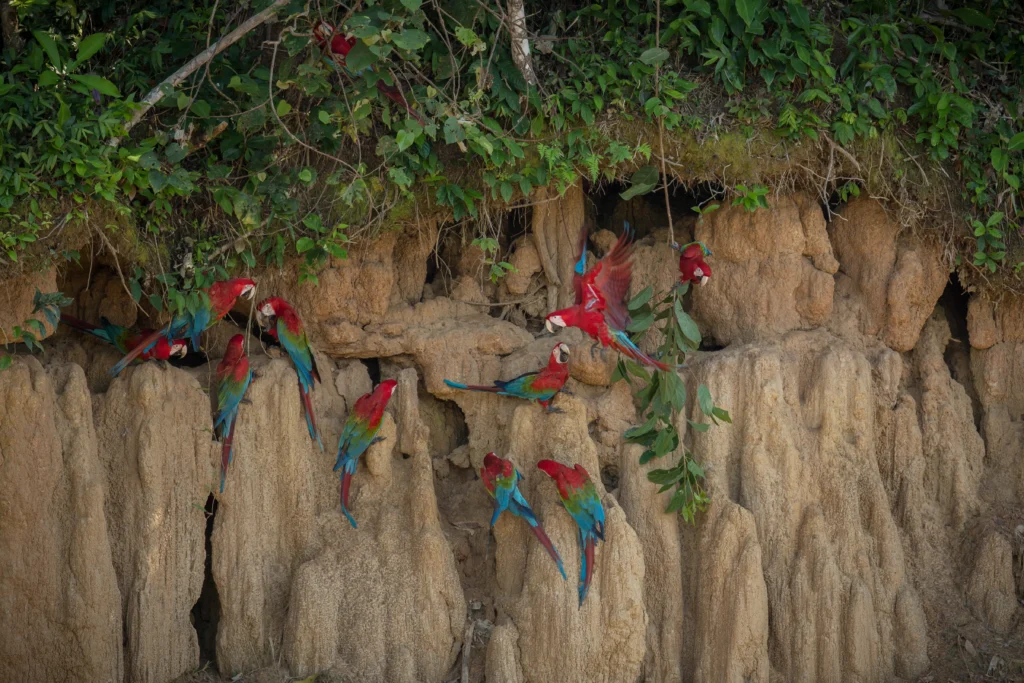
Another common mistake is underestimating the spatial needs of the Catalina Macaw. These large, active birds require substantial space to thrive, both in terms of their cage and safe out-of-cage areas.
Catalina Macaw Cage Size Requirements
A Catalina Macaw cage size must be significantly larger than what many first-time owners expect. The minimum recommended cage dimensions are 40″W x 30″D x 60″H (101cm x 76cm x 152cm), though larger is always better. Bar spacing should be between 3/4″ to 1″ to prevent escape while allowing the bird to climb safely.
Remember that the Catalina Macaw size makes them one of the larger companion parrots, with adults reaching up to 36 inches in length. A cage that’s too small can lead to physical health problems, psychological distress, and behavioral issues.
Temperature and Environment
Catalina Macaws thrive in environments with temperatures between 65-85°F (18-29°C). Avoid placing their cage near drafty windows, air conditioners, or in direct sunlight, which can cause stress and health problems.
Bird-Proofing Your Home
Catalina Macaw care includes creating safe spaces for out-of-cage time. These intelligent birds need daily exercise and exploration. Before allowing your Catalina Macaw out of its cage, remove or secure:
- Toxic houseplants
- Lead-containing objects (certain curtain weights, stained glass, etc.)
- Electrical cords
- Toxic fumes from non-stick cookware, scented candles, or aerosols
- Small objects that could be swallowed
- Ceiling fans and open toilet lids
Expert Tip: Install a play stand in areas where you spend the most time. This gives your Catalina Macaw a designated safe space to enjoy family activity while respecting boundaries.
Mistake #3: Feeding an Improper Diet
Diet plays a crucial role in Catalina Macaw care, directly impacting their health, lifespan, and behavior. Unfortunately, dietary mistakes are common among new owners.
The Ideal Catalina Macaw Diet
A properly balanced Catalina Macaw diet should consist of:
- High-quality pellets (50-60%): Look for organic, naturally colored pellets specifically formulated for large parrots.
- Fresh vegetables (20-30%): Dark leafy greens, carrots, sweet potatoes, broccoli, and bell peppers provide essential nutrients.
- Fresh fruits (10-15%): Apples, berries, papaya, and mango offer variety and enrichment.
- Nuts and seeds (5-10%): Almonds, walnuts, and macadamia nuts should be given sparingly as high-fat treats.
- Healthy proteins (5%): Cooked eggs, small amounts of cooked chicken, or legumes provide necessary protein.
Common Dietary Mistakes
Many new Catalina Macaw owners make these critical dietary errors:
- Seed-heavy diets: Seeds alone lack essential nutrients and are too high in fat, leading to obesity and vitamin deficiencies.
- Table scraps: Feeding your Catalina-Macaw food from your plate often introduces too much salt, sugar, and fat.
- Toxic foods: Avocado, chocolate, caffeine, alcohol, and foods high in salt or sugar can be toxic or harmful.
- Inconsistent feeding: Irregular feeding schedules can create stress and behavioral problems.
The Impact of Diet on Catalina Macaw Lifespan
A proper diet can significantly impact your Catalina-Macaw lifespan. Birds fed optimal diets with appropriate supplementation tend to live longer, healthier lives. Conversely, poor nutrition can reduce a Catalina Macaw’s lifespan by 10-20 years and lead to numerous health problems, including liver disease, heart problems, and weakened immune systems.
Expert Tip: Introduce new foods gradually, especially when transitioning a Catalina-Macaw from seeds to pellets. This can be accomplished by mixing increasing amounts of pellets with decreasing amounts of the current diet over several weeks or months.
Mistake #4: Neglecting Training and Socialization
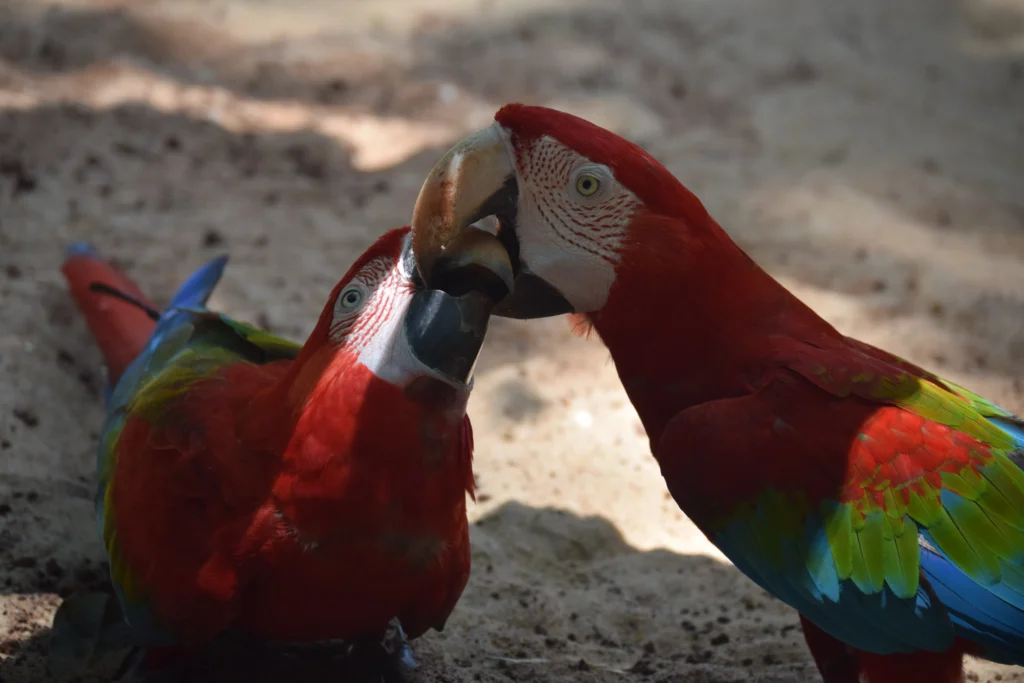
Many new owners underestimate the importance of consistent training and proper socialization for a Catalina-Macaw.
The Importance of Early Training
Training should begin immediately after bringing your Catalina Macaw home, regardless of whether you have a Catalina-Macaw baby or an adult bird. Basic commands like “step up,” “step down,” “stay,” and “no” create clear communication channels between you and your bird.
The Catalina-Macaw intelligence level is comparable to that of a 3-5 year old child, making them highly trainable but also prone to testing boundaries. Consistent, positive reinforcement-based training helps channel this intelligence productively.
Socialization Needs
Proper socialization is crucial for developing a well-adjusted Catalina-Macaw temperament. These birds need exposure to different people, environments, and situations to prevent them from becoming overly bonded to just one person, which can lead to aggressive behavior toward others.
However, socialization must be carefully managed. Introduce new people gradually and in positive contexts. Never force interaction if your Catalina-Macaw shows signs of stress or fear.
Managing Catalina Macaw Noise Level
The Catalina-Macaw noise level can be quite significant, with calls reaching over 100 decibels. While some vocalizations are natural and healthy, excessive screaming often indicates unmet needs or insufficient training.
To manage Catalina-Macaw noise level:
- Establish a consistent daily routine
- Provide ample mental stimulation through toys and interaction
- Never reward screaming with attention
- Reward quiet behavior
- Ensure the bird has 10-12 hours of uninterrupted sleep
Expert Tip: Keep training sessions short (5-10 minutes) but frequent (2-3 times daily). Catalina-Macaws, like their parent species, respond best to positive reinforcement rather than punishment.
Mistake #5: Ignoring Health and Behavioral Signs
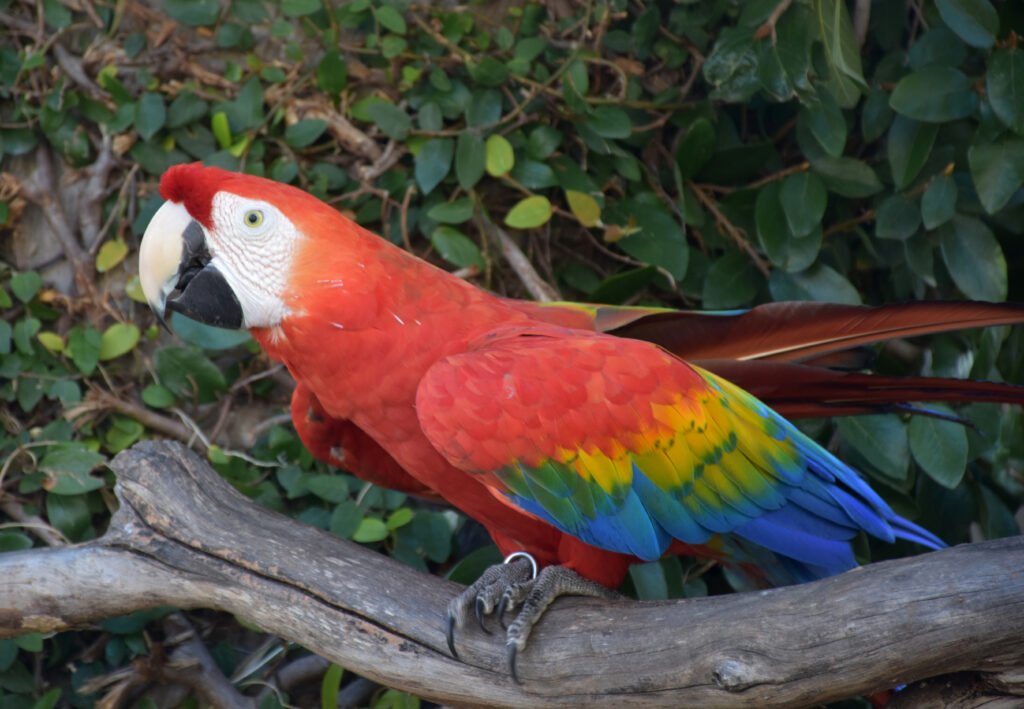
Perhaps the most dangerous mistake new Catalina-Macaw owners make is failing to recognize signs of illness or distress.
Common Health Concerns
Catalina-Macaws are susceptible to several health issues:
- Psittacosis (avian chlamydiosis)
- Aspergillosis (fungal infection)
- Polyomavirus
- Proventricular Dilatation Disease (PDD)
- Nutritional deficiencies
- Feather plucking due to psychological or physical issues
The Importance of Regular Veterinary Care
Find an avian veterinarian before purchasing a Catalina-Macaw. Regular check-ups should occur at least annually, with bi-annual visits recommended for older birds. Establish baseline health parameters when your bird is healthy to help identify problems later.
Recognizing Signs of Illness
Catalina-Macaws, like many prey animals, instinctively hide signs of illness. By the time symptoms are obvious, the condition may be advanced. Watch for subtle changes:
- Alterations in droppings (color, consistency, frequency)
- Changes in appetite or water consumption
- Decreased vocalization or activity
- Fluffed feathers for extended periods
- Tail bobbing or labored breathing
- Changes in posture or perching habits
Behavioral Red Flags
Behavioral changes can indicate physical or psychological distress:
- Sudden aggression
- Increased screaming
- Feather plucking or self-mutilation
- Withdrawal or lethargy
- Changes in sleep patterns
- Repetitive movements
Expert Tip: Keep a health journal for your Catalina-Macaw, noting appetite, droppings, behavior, weight, and any unusual observations. This documentation can be invaluable for your veterinarian if health issues arise.
Catalina-Macaw vs Harlequin Macaw: Which Is Right for You?
When considering hybrid macaws, many potential owners compare the Catalina Macaw vs Harlequin Macaw. While both are stunning first-generation hybrids, there are some differences to consider.
The Harlequin Macaw results from crossing a Green-winged Macaw with a Blue and Gold Macaw, while the Catalina-Macaw comes from a Scarlet Macaw and Blue and Gold Macaw pairing. The Harlequin Macaw typically displays darker red coloration and may have a slightly different temperament, often inheriting more of the assertive nature of the Green-winged Macaw.
When choosing between a Catalina-Macaw vs Harlequin Macaw, consider:
- Color preferences (Catalinas often have more orange tones)
- Subtle temperament differences (Catalinas may be slightly more gregarious)
- Availability (Catalina-Macaws are generally more common)
- Price (Harlequin Macaws sometimes command higher prices)
Both require similar care, housing, and commitment levels, so the choice often comes down to personal preference and which individual bird connects with you.
Finding a Catalina-Macaw for Sale: What to Know
If you’ve decided a Catalina-Macaw is right for you, it’s essential to source your bird responsibly.
Where to Find a Catalina-Macaw for Sale
While searching for a Catalina-Macaw for sale, consider these options:
- Reputable bird breeders who specialize in macaws
- Avian-specific rescue organizations
- Bird shows and expos where you can meet breeders in person
- Avian veterinarians who may know of birds needing rehoming
Avoid pet stores and online marketplaces that don’t allow you to meet the bird or see its living conditions before purchase.
Questions to Ask Before Purchase
When you find a Catalina-Macaw for sale, ask the breeder or rescue:
- What is the bird’s exact age?
- Has the bird been DNA tested to confirm gender?
- What diet is the bird currently eating?
- Has the bird been socialized with different people?
- What is the bird’s medical history and has it been tested for common avian diseases?
- Is the bird already trained for basic commands?
- What is the return policy if the match isn’t suitable?
- Can you provide references from other customers?
Red Flags When Shopping for a Catalina-Macaw
Be wary of:
- Prices significantly below market value (a healthy, well-raised Catalina Macaw price typically starts around $2,500)
- Reluctance to allow you to visit and interact with the bird before purchase
- Poor living conditions or multiple birds kept in cramped cages
- Signs of illness such as discharge from eyes or nares, labored breathing, or lethargy
- Birds that appear fearful of human handling
- Breeders who can’t provide health records or information about the bird’s parents
Expert Tip: Consider adopting an adult Catalina-Macaw. While many people want a Catalina-Macaw baby, adult birds often have established personalities, may already be trained, and are frequently in need of loving homes.
Conclusion: Creating a Happy Life with Your Catalina Macaw
Avoiding these five common mistakes will set you on the path to a fulfilling relationship with your Catalina Macaw. Remember that these magnificent birds are intelligent, sensitive creatures with complex needs and emotional lives.
The Catalina Macaw’s stunning colors, remarkable Catalina Macaw intelligence, and affectionate Catalina Macaw temperament make them extraordinary companions for the right owner. With their impressive Catalina Macaw talking ability, playful antics, and potential for a long Catalina Macaw lifespan of 50-70 years, these birds can become cherished family members across generations.
However, they require an equally extraordinary commitment to their care, including appropriate Catalina-Macaw cage size, a nutritious Catalina-Macaw diet, understanding of normal Catalina-Macaw noise level, and dedication to their social and emotional needs.
By educating yourself before bringing home a Catalina-Macaw, you’re taking the first and most important step toward providing a wonderful life for one of these remarkable birds. Your Catalina-Macaw will reward your dedication with decades of companionship, intelligence, and joy.
Additional Resources for Catalina-Macaw Owners
For more information about proper bird care and specific articles about parrots and exotic pets, visit our website at PetsMemes.com. Our detailed guides on parrot diet, bird health, and training techniques can further support you in your journey with your Catalina-Macaw.
Other trusted resources include:
- Avian Welfare Coalition
- Association of Avian Veterinarians
- World Parrot Trust
- BirdChannel.com
- Lafeber Company (excellent educational resources)
Remember that responsible Catalina Macaw ownership is a rewarding journey that requires ongoing education, patience, and dedication. By avoiding these common mistakes and continuing to learn about your magnificent companion, you’ll create a foundation for many happy years together.



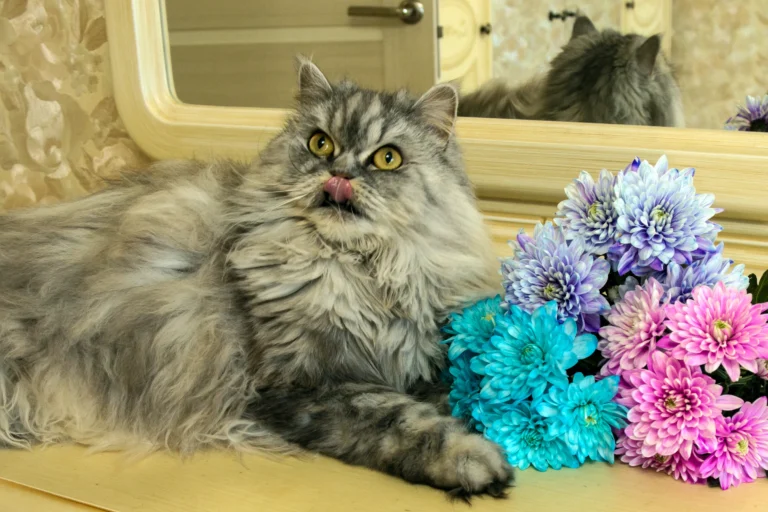

Leave a Comment